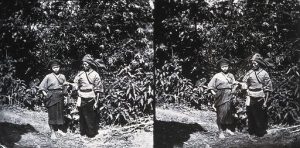
[Update: Clarified that the fossils of more than one individual discovered at the site; the previous description implied that there was only one individual recovered.]
Archaeologists have unearthed evidence that a group of “little people” that were previously featured only in indigenous Taiwanese legend really did exist, meaning that if these legends are accurate they may have been present on the island up until the nineteenth century.
They were sometimes referred to as “Pygmies”, and these people appear to have predated the currently known indigenous groups present in modern Taiwan. Their presence appears to have been the basis of legends in the area particularly from the Formosa region.
Although the skulls of numerous individuals were excavated at the site, the evidence that the legends of these little people were based on actual events is based on the fossil of an individual that was discovered in eastern Taiwan’s Xiaoma Caves, consisting of the remains of a female that stood 139 centimeters tall (about four and a half feet) who lived roughly 6,000 years ago. She was buried in a squatting position, consistent with the burial practices of other hunter-gatherer graves excavated in China and Southeast Asia that date back to Paleolithic times; stone tools and other artifacts were also collected from the site.
“At several cave sites of eastern Taiwan, the ancient archaeological layers have shown that hunter-gatherers had been living in this area at least since 30,000 years ago,” explains study co-author Hung Hsiao-chun, a senior research fellow of Archaeology and Natural History at the Australian National University. “Therefore, the findings at Xiaoma around 6,000 years ago represented people of the same ancient hunter-gatherer population but at a much later time period.”
The initial migration to the island that took place 30,000 years ago was facilitated by a land bridge that connected Taiwan to the mainland; this bridge disappeared 10,000 years ago at the end of the Pleistocene when a dramatic rise in sea levels occurred. However, there is a gap in the archaeological record between 15,000 and 7,000 years ago where there is no evidence of habitation on Taiwan, so it is unclear as to whether the Negritos are the descendants of the peoples that originally walked to the island, of if they were part of a separate group that sailed there after Taiwan was cut off by the sea.
Archaeological evidence of the peoples that settled there only dates up to about 6,000 years ago, with the modern Formosa indigenous populations not arriving on the island until 5,000 years ago, leaving a 1,000-year gap between the two groups; regardless, stories of encounters with groups of diminutive people with dark complexions are a part of Formosa oral traditions.
“Prior to our work, some people knew about the legends of the ‘small black people’ of eastern Taiwan who reportedly lived there long ago, but the stories were unclear and generally regarded as a mystery,” remarked Hung.
One of these stories includes a legend recounted by the Saisiyat, one of Taiwan’s indigenous cultures, that tells of their ancestors’ relationship with a short, dark-skinned people called the Ta’ai, who taught the Saisiyat the basics of medicine and cultural traditions such as singing and dancing.
At one point the men of the Saisiyat tribe took revenge on the Ta’ai for making aggressive sexual advances toward their women, and as a result of the conflict nearly all of the Ta’ai were killed. Shortly afterward the Saisiyat were afflicted by a famine that they attributed to the vengeful spirits of the Ta’ai, and began a tradition called the “Pas-ta’ai”, a ritual held once every two years to appease the “Spirits of the Short People”.
Subscribers, to watch the subscriber version of the video, first log in then click on Dreamland Subscriber-Only Video Podcast link.
One small-framed skeleton does not a culture of little people make. It’s hopeful, but pure science would require the study of more than just one family tree to make that kind of a distinction.
That said, our world is a mysterious place where once roamed massive creatures that ate equally massive plant life. Yet today, it’s almost become another world based on what plant and animal life remains; everything seems to have shrunken and/or miniaturized.
Whatever this world contains, I hope it’s more than just an illusion. 🙂
Thanks for pointing this out: the way I worded the article made it sound as if the fossil of only one individual was recovered; numerous skulls of the same group were actually unearthed, but their height was based on the measurements of the most compete skeleton from just one individual.
I apologize for any inconvenience this may have caused.